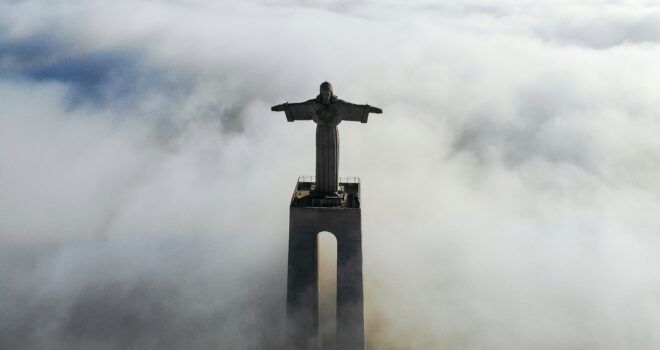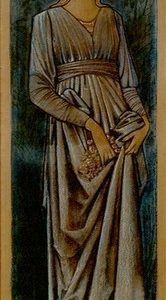Jesus asks His disciples, “Who do people say that I am?” All the disciples’ responses do not align with the truth.
A heresy is a misbelief or a disbelief in what the Church teaches. Every heresy about Jesus throughout history is a direct misrepresentation of His identity. Christ wasn’t fully human—Docetism. Christ only appeared to be a man—Gnosticism. We inherit righteousness through our own actions rather than as a result of Christ’s death on the cross—Pelagianism. Christ was only a creature made by God—Arianism.
Perhaps the most famous story about Arianism passed down through the ages reveals that when Arius showed up at the Council of Nicea (325 A.D.) and tried to sell the idea that Jesus was not divine, St. Nicholas punched him in the face.
Ultimately, these heresies are all incorrect answers to the following question that Jesus asks His apostles in this scene: “Who do you say that I am?” Who do we say Jesus is? Who is He to us? Who is He when we speak of Him?
The correct answer can be found in what the Church refers to as the hypostatic union. To explain, the Holy Trinity is one God in three divine Persons: Father, Son, and Holy Spirit. The teaching of the hypostatic union explains that Jesus Christ, the second Person of the Holy Trinity, is fully God and fully Man—not just one or the other, not just partially one and partially the other.
In response to Jesus’ second question, Peter simply says, “You are the Christ.” And He is correct. His few words, revealed to Him by the Father and not by his own understanding, answers all misunderstandings and heresies.
Flannery O’Connor, the great Catholic southern author of American fiction, is known for employing a “mean grace” in her work. She could be earthy, blunt, and yes, even downright offensive, but she always cut to the core of truth. She said, in effect, “If the Eucharist is only a symbol, I don’t want anything to do with it.” (I’m paraphrasing the second half of the quote. Her actual words are a bit rough.) She boldly refutes a heresy and communicates a universal truth: the Eucharist is not a symbol. The Eucharist is Jesus.
Either what the Church teaches is true or it’s not. Jesus assures us that it is. He shed His Blood and gave His Life for this truth.
Yet contemporary heresies persist in our time. Misrepresentations and misunderstandings of the true nature and identity of Jesus abound in the context of His question, “Who do people say that I am?” He gives His followers the answer in the question itself. In the Book of Exodus, when Moses asked God for His Name on Mt. Sinai from the burning bush, God replied, “I am Who I am.”
Consider the remainder of the gospel passage. Jesus says that He will suffer greatly and be killed for His nature, for His identity, for Who He is. He then tells His followers that they must walk the same path of suffering and martyrdom. “Deny yourself, pick up your cross, and follow Me.” The cross is, without a doubt, going to be hard and painful.
Suffering and death are inevitable. They can either be wasted, or they can be salvific and redemptive. To save your life is to lose it, but to lose your life for the sake of Jesus is to save it. These words find their meaning when we contemplate “offering up” our sufferings, and even our death, in remediations of our sins and for the sake of others.
This is why the three Catholic priests aboard the Titanic, who were each offered seats on lifeboats, declined so that they could give the seats to others. They sacrificed their earthly lives to minister to those around them until their dying breath, saving the lives of others for Jesus in their efforts to save their own eternal lives. Their sacrifice truly emulated the words of Jesus: “There is no greater love than this; to lay down your life for your friends.”
Flannery O’Connor knew this only too well. She said, “What people don’t realize is how much religion costs. They think faith is a big electric blanket, when, of course, it is the cross.”
In these days of modern heresies and in the face of the ongoing crisis of identity in the world, we’re called to defend the truth. Like St. Peter, Flannery O’Connor, the three priests on the Titanic and, yes, even St. Nicholas, the purported Giver of Gifts and Puncher of Heretics…our challenge in this life, my dear brothers and sisters in Christ, is to be on the right side of history as Jesus looks each of us directly in the eyes and asks us, “Who do you say that I am?”
Raphael. (1515). Christ’s Charge to Peter [painting]. Retrieved from WikiMedia Commons.










